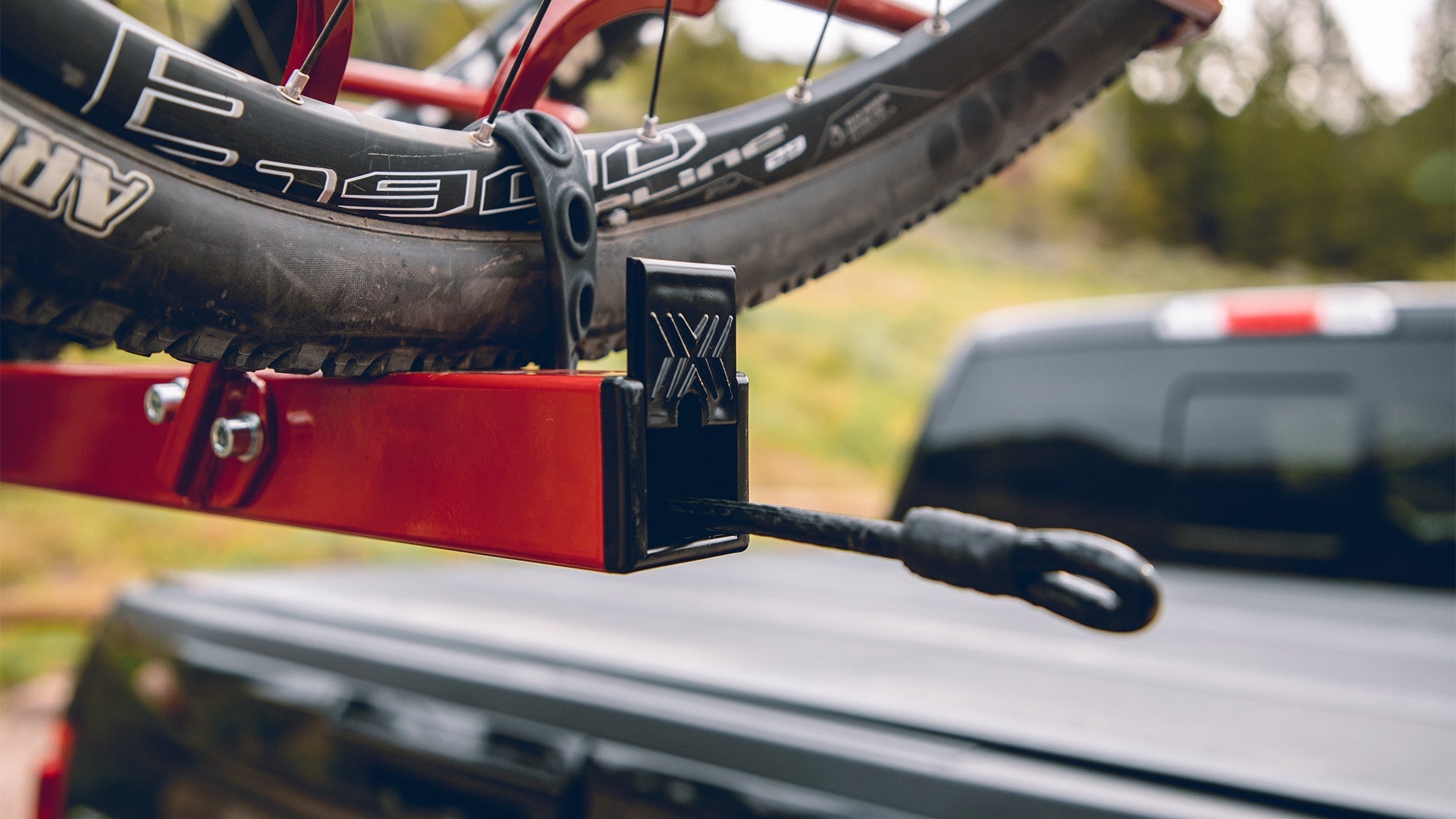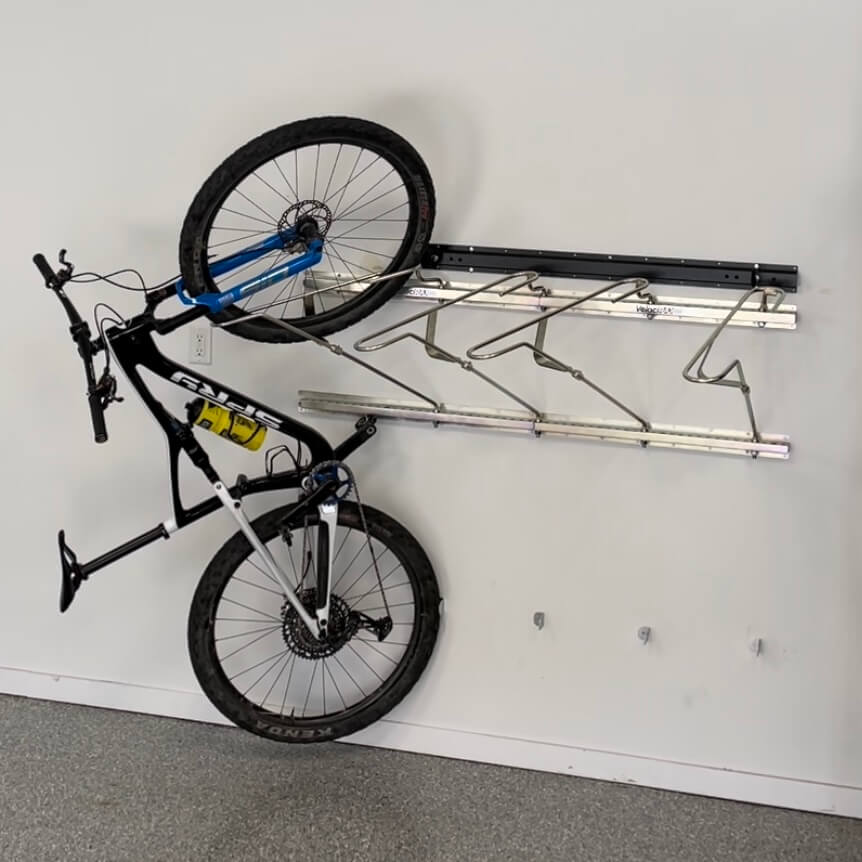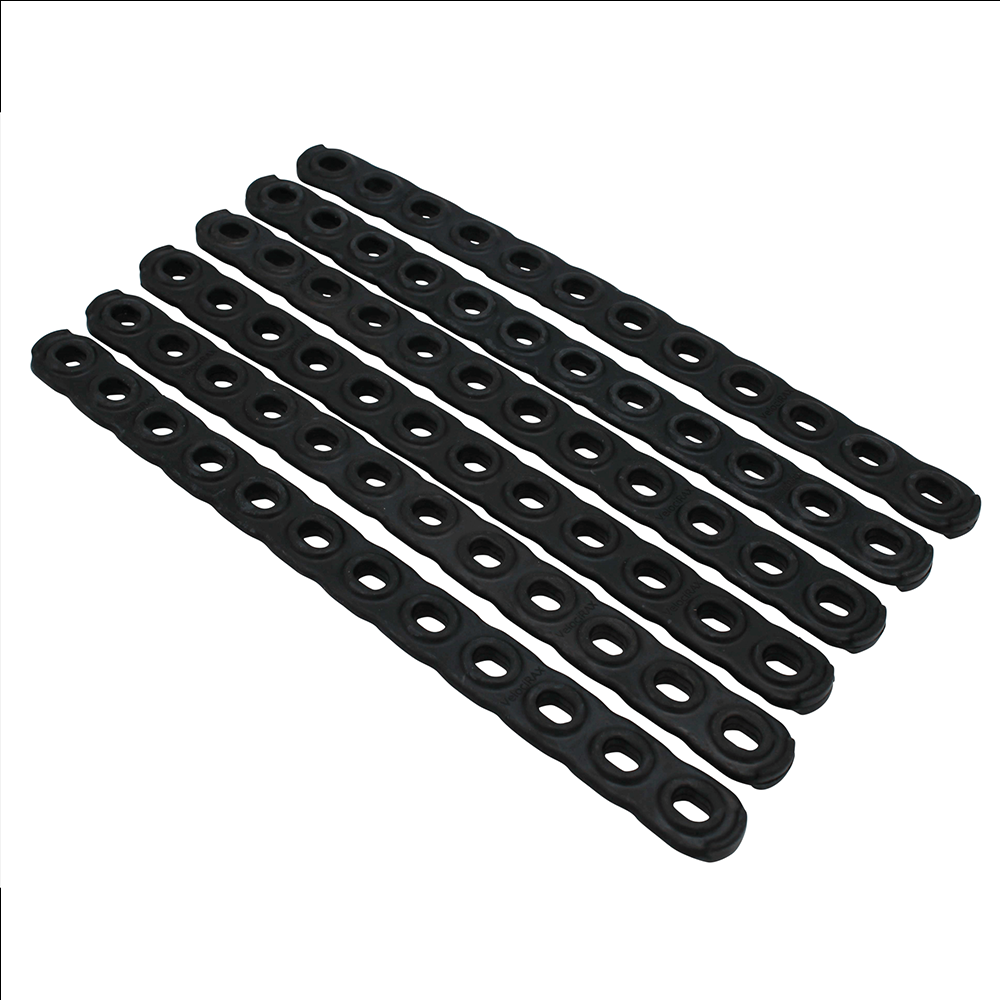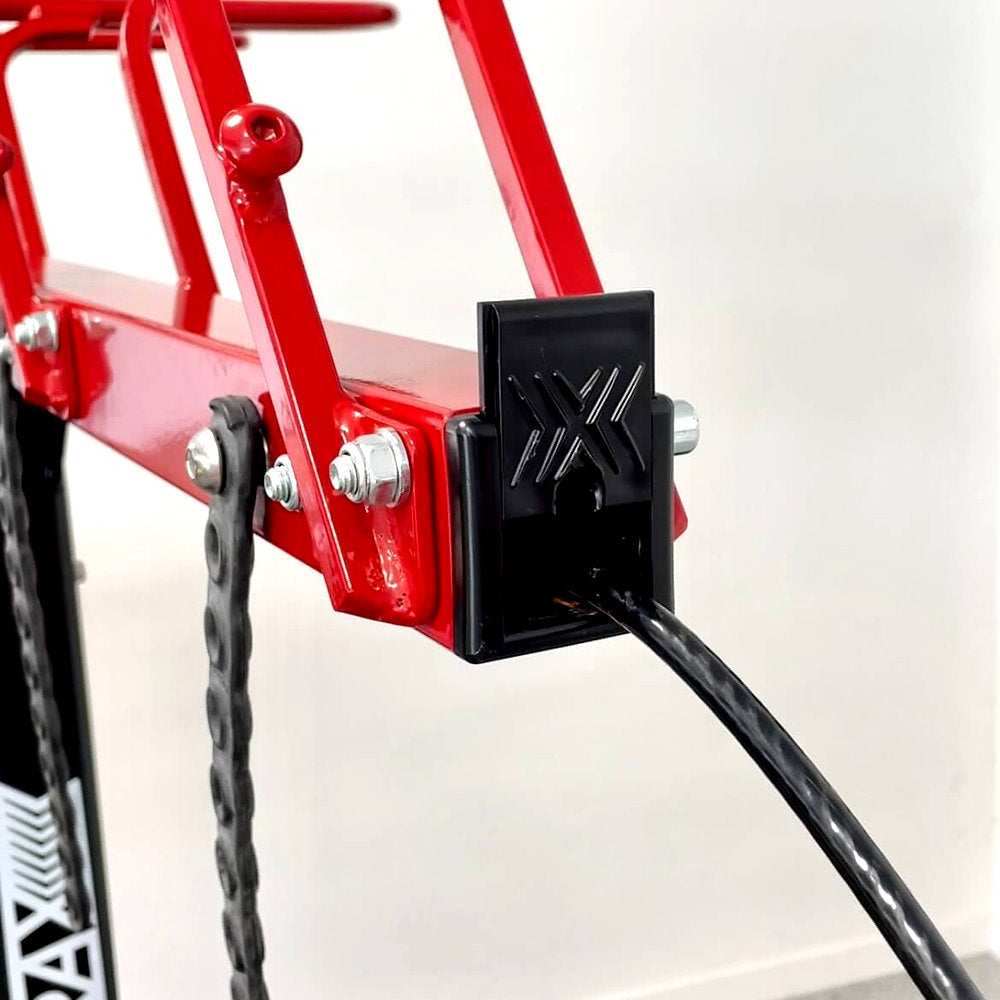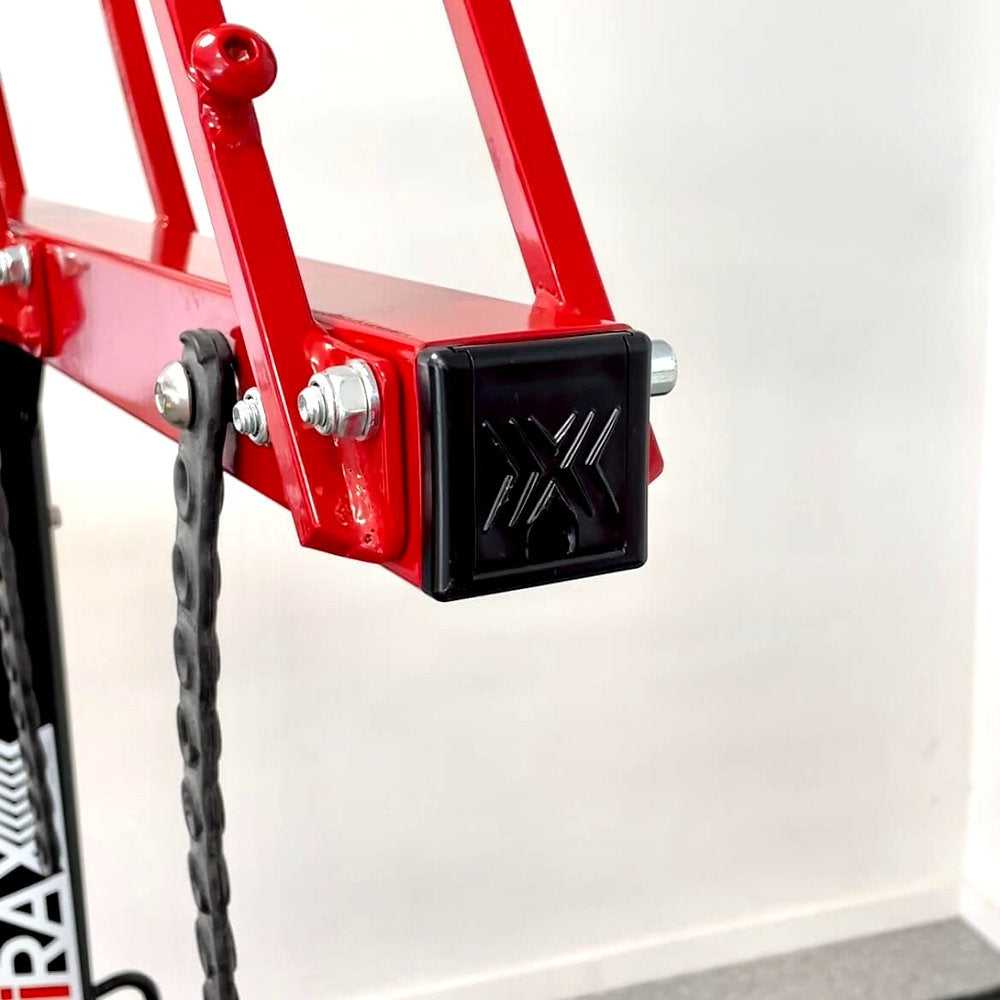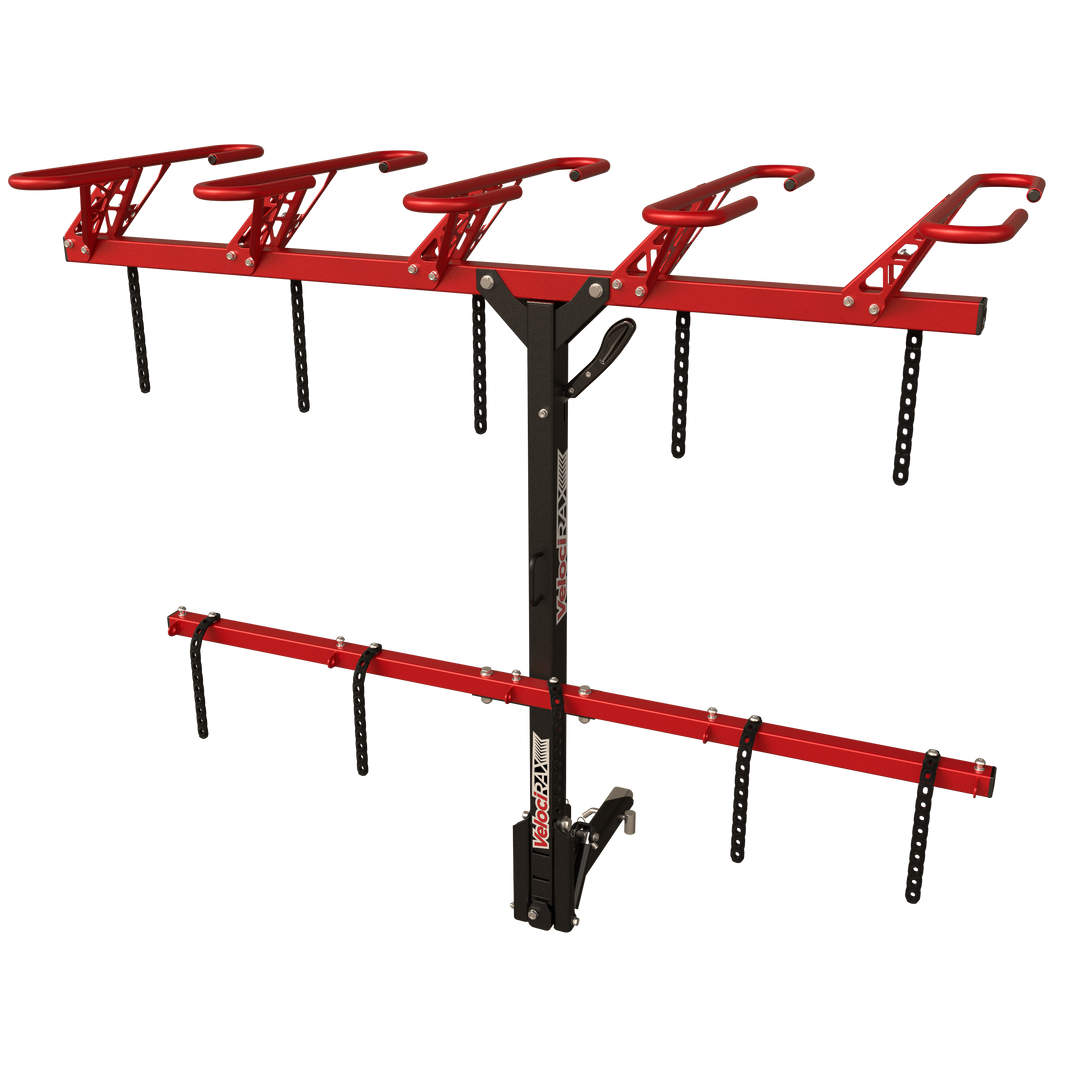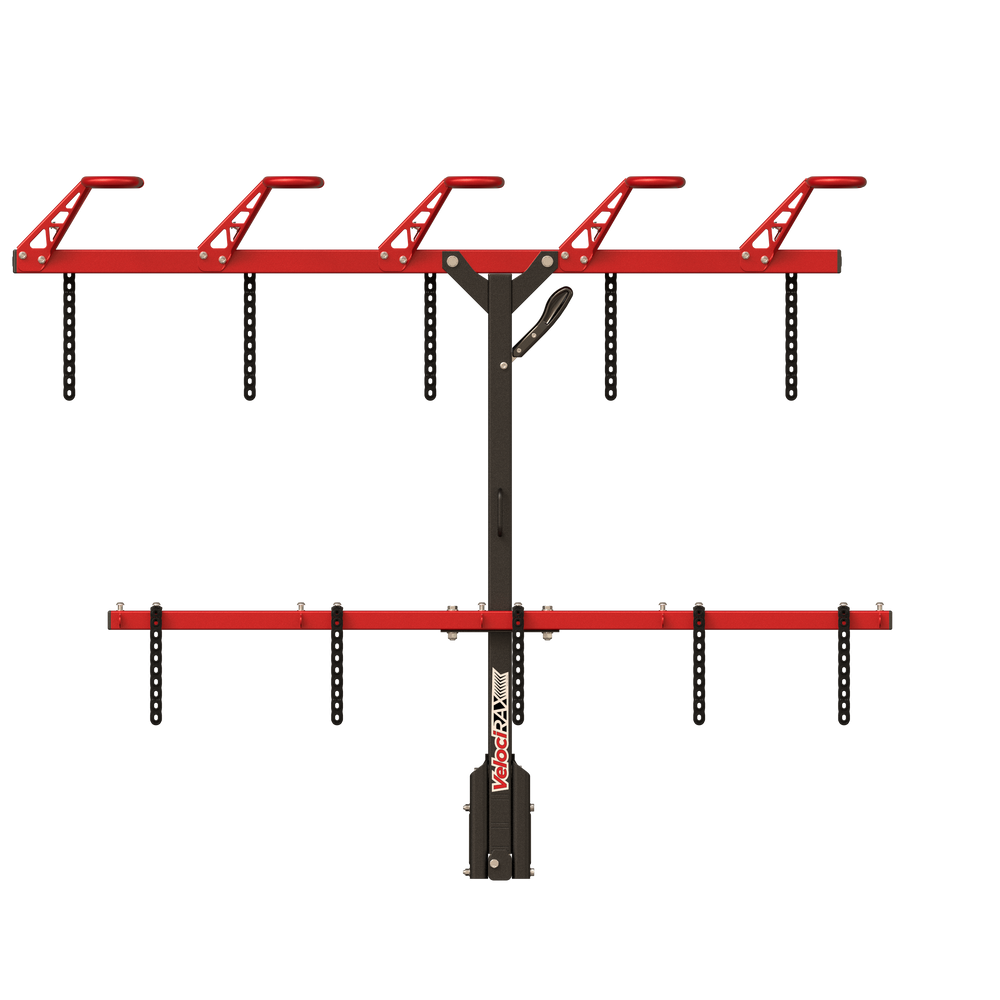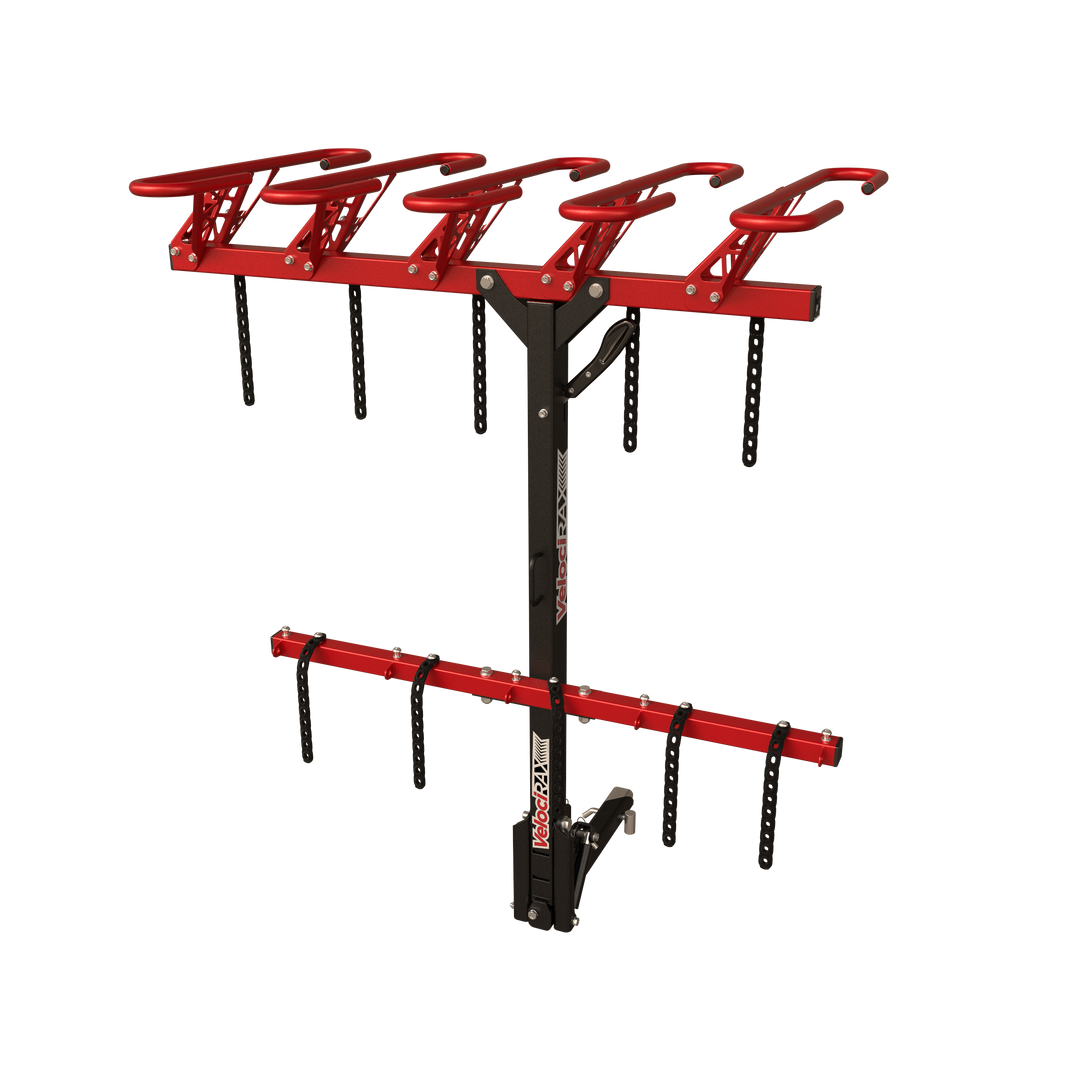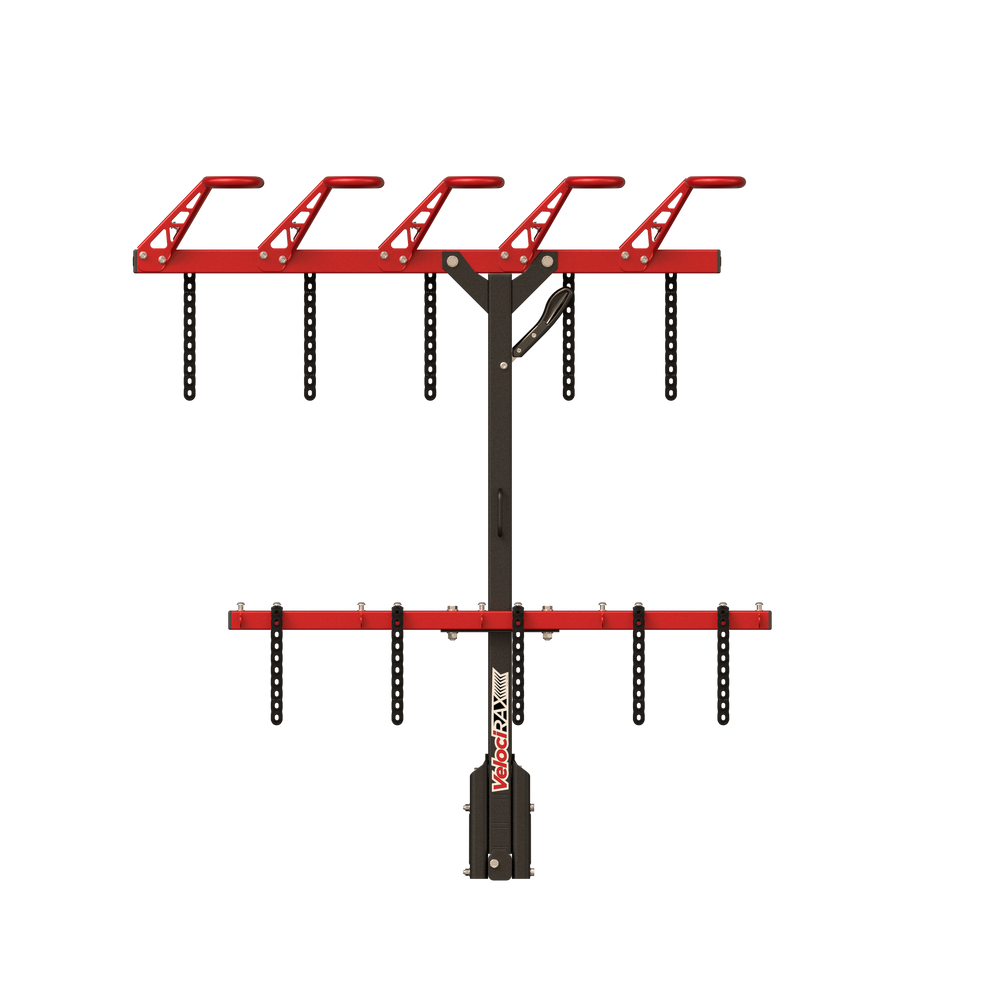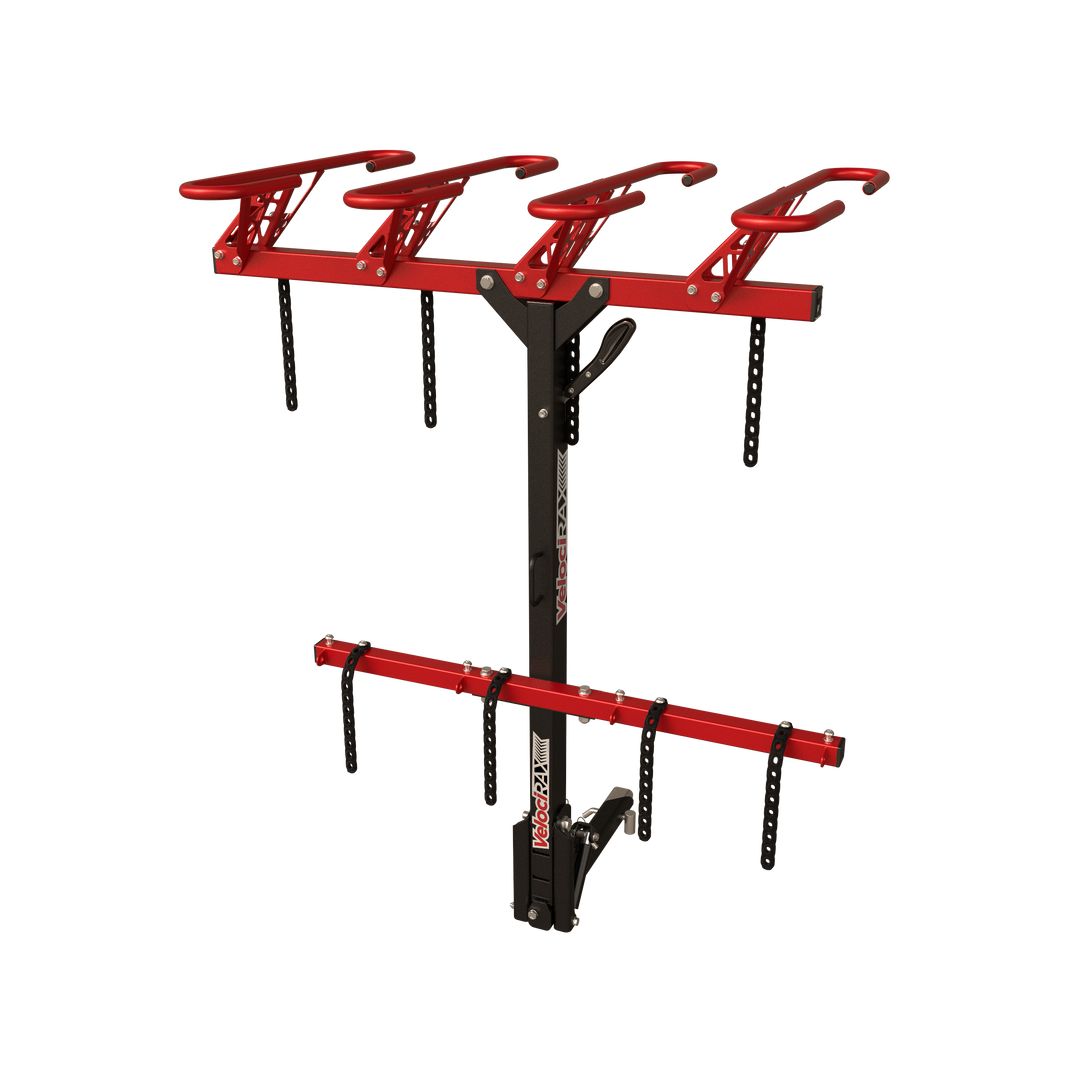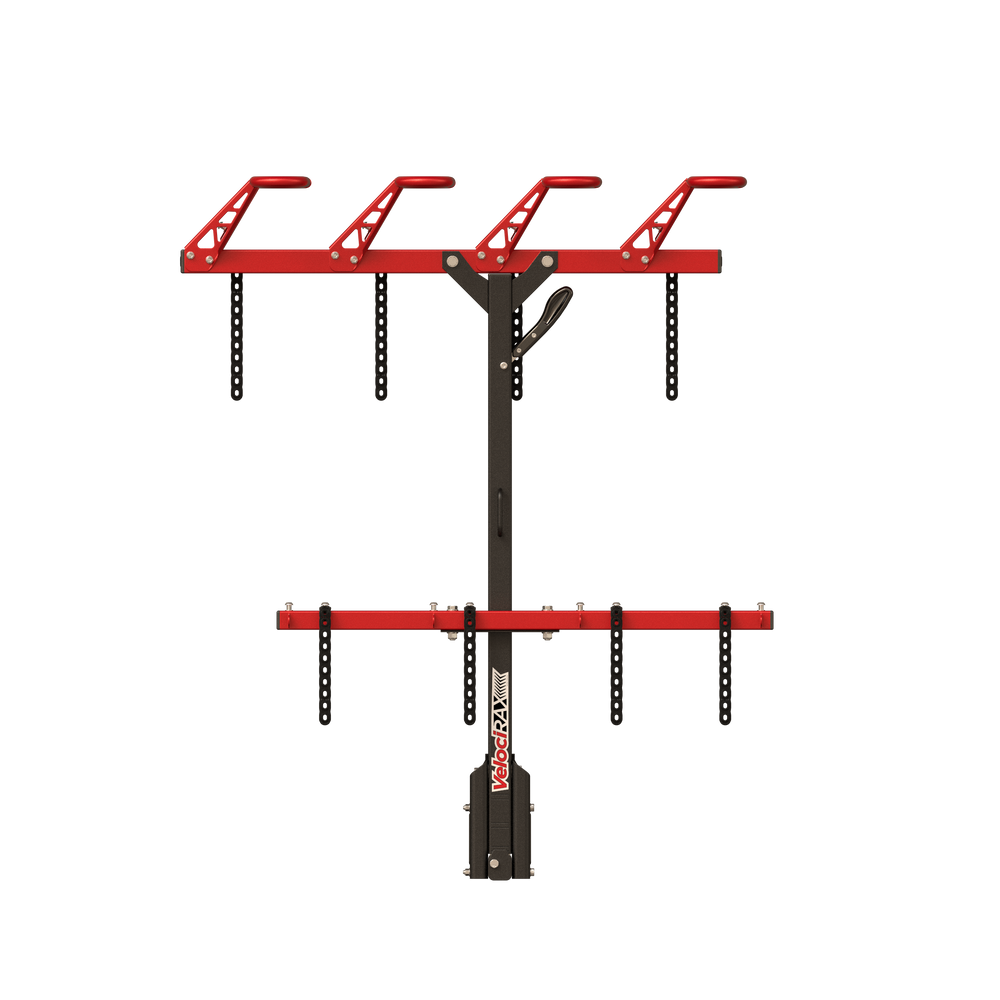What Are Your Hitch Bike Rack Options? Here are 5 Questions to Ask!
Are you going on vacation with a bike or two (or seven)? As you prepare for your bike getaway, it’s all fun and games until you realize that you need a better bike rack or a hitch. With so many hitch bike rack options on the market, your head will be spinning faster than tubeless tires before a booter.
Would you opt for a platform rack or one that hangs? Should you choose a vertical rack or a horizontal one? If these options aren’t paralyzing enough, you also have to pick a rack based on how you want your bikes locked.
Luckily, we are here to speed up your decision-making process. Stay glued to your seat and continue reading to learn about bike racks for hitches and what to ask yourself before buying one.
The Different Bike Racks for Hitch Options Available on the Market
Bike racks for hitches come in all sorts of builds and dimensions. There are multiple categories to consider:
-
Bike arrangement
-
Number of bikes carrying
-
How bikes are secured
-
Vertical or horizontal orientation
-
Detachable or stationary hitch options
Let’s take a look at each of your options for bike racks:
Platform Racks vs. Hanging Racks
Platform bike racks have trays on which bikes are secured by strapping rear and front tires parallel to the ground. With a platform bike rack, a lever attached to the bottom of the rack clamps bikes down, reducing sway when you drive.

These kinds of racks have enough space for one to four bikes. Unfortunately, they take up a bit of space, so backing up your vehicle and parking requires more attention and patience.
Hanging bike racks, otherwise called frame-mounted racks, are more compact due to the absence of a bike tray. Instead, bike frames latch onto the rack, allowing the bike to hang. The compactness of a hitch-mounted hanging bike rack makes maneuverability easier. Although hanging bike racks are flexible, they can be limiting due to the available capacity many offer.

Frame Mount vs. Wheel Mount
Frame mount bike racks have arms that secure bike frames, which leave wheels free. Frame mount racks offer marginally more security than wheel mount or strap-mounting bike racks but require contact points with the most expensive component of your bike, the frame. Additionally, with the wheels free and moving, you run the risk of damaging the rear of your vehicle.
Wheel mount bike racks secure bikes by the tires with levers like in a platform rack. These racks often have more storage compared to a frame mount rack. Of course, the relative bulkiness is something to consider.

Some bike racks secure the frame or wheel (or both) using straps made of resilient high-tension material, which are often more affordable.
Be sure to secure bikes tightly when using straps because they can loosen if you’re not careful. Additionally, fasten straps in a way that won’t damage your bike.
Vertical Hitch-Mounted Rack vs. Horizontal Hitch-Mounted Rack
Hitch-mounted bike racks come in both vertical and horizontal styles. Whether you prefer a vertical or horizontal bike rack, hitch-mounted bike racks are the most reliable and durable option. Each arrangement has different abilities, but vertical hitch-mounted bike racks are popular when storing four or more bikes.
Horizontal racks require lifting bikes off the ground, which can add up quickly when loading several bikes. A horizontal rack holding a couple of bikes takes up less rear space than a vertical rack, but when storing more than a few bikes, the amount of space a vertical hitch rack takes up becomes very appealing.
Loading vertical bike racks work best by wheelieing bikes and rolling them into designated tire baskets, which can be done without any lifting (kids can do it!!). Horizontal bike racks require users to completely lift bikes off the ground while keeping them off the ground, which is often done by lifting the bike frame and typically leaves the work to one person.

The obvious benefit of a vertical rack is the amount of storage potential because it can confidently carry more bikes than other bike carrier options. Typically, horizontal racks can fit up to four bikes and stand on a platform behind the vehicle. These are usually cheaper than vertical hitch racks but are limiting if you want to carry more than four bikes at once.
Additionally, given the orientation and location of bikes, accessing them may be difficult because you will likely have to remove bikes to access a particular one. Both racks are great for frequent riders, but vertical bike racks will be quicker and easier to load and unload more at a time.
Ideally, the perfect bike rack for hitches does not stick out very far, can store many bikes, and provides easy access to bikes at any given time. Believe it or not, such racks exist! A couple of fitting examples are our most popular models: VelociRAX 5X and VelociRAX 7. With a VelociRAX vertical bike rack, you can store 3 to 7 bikes at once, which is more than any other bike rack on the market. No one has to miss out on the fun when there is enough bike storage on your rack.

Now that you understand the basic types of bike racks for hitch mounts keep reading to learn the five questions that will help you identify the right bike rack fitted to your needs.
Five Questions You Need to Ask Yourself Before Choosing Bike Racks for Hitches
1. “How Many Bikes Do I Have? How Many Bikes Will I be Taking with Me?”

It’s not too difficult to secure one bike. If you own a roof rack, you have storage for a bike. If you drive an SUV, you probably have enough room in the trunk for one bike. Either way, having a single bike means you might not need a bike rack with a trailer hitch.
On the other hand, you’ll certainly need a hitch-mounted bike rack if you habitually travel with more than a single bike. A hitch-mounted bike rack is especially necessary if you ever go out riding with friends or family. Having your bikes on a hitch rack frees up trunk space, while still providing easy access to the rear of your vehicle.
2. “How Do I Want my Bikes Secured?”
Different racks will have different ways of keeping your bikes in place. You'll have to choose if you favor certain straps or hinges.

Many straps or levers can keep bikes from falling in the middle of your drive, but some can also damage your bike. VelociRAX includes heavy-duty rubber straps for front and rear tires to keep bikes secured to the rack. These rubber straps have a UV filament that protects them from sun damage and can hold e-bikes on up to 55 lbs on the bumpiest of roads.
Keep in mind that the way a bike is secured also impacts how easy (or difficult) it is to load and unload bikes.
3. “How Big is My Garage?”
If you are the type to leave your bike rack on your vehicle for an extended period and don’t want to park outside, then make sure your vehicle can fit in your garage with the bike rack you choose.
Your rack may live on your car full-time, but in many cases, the rack will end up in the garage at some point. So, it is important to consider how much space a rack will need when in storage.
Do you have room for it? If you have limited space in your garage, measure above and behind your vehicle before finalizing your rack decision.
4. “Is there a Place to Store My Rack When I Unhitch It?”
If you have the space, great! However, not everyone has a spacious garage that can accommodate bulky items like a bike rack. Most people either keep their bike racks in the trunk, on the hitch, or in the garage.
Each VelociRAX includes a wall mount if you desire to hang it upright in the garage, which optimizes space and can double as bike storage. This wall mount has two hooks that the rack hangs from to keep it close to the wall and ready to load bikes.
On the other hand, many customers decide to leave their rack attached to their hitch. Our hinge system makes it easy to access the back of the car. Full-size SUVs can completely open their trunks without interfering with the rack if the rack is in the loaded, hinged position. Your bike rack will never be in the way!
5. “How Much Bike Lifting Am I Willing to Do?”
There is a reason vertical racks are more popular than horizontal or roof racks for bikes. A lot of it has to do with convenience. More specifically, vertical bike racks for hitches require little to no lifting. VelociRAX vertical racks utilize roll-in and roll-out loading, which makes it easy for kids and adults to get bikes on the rack.

Vertical racks like the ones we offer provide easy access to the bikes. Once you walk up to your bikes, all you need to do is undo the straps then the bikes are ready to go!
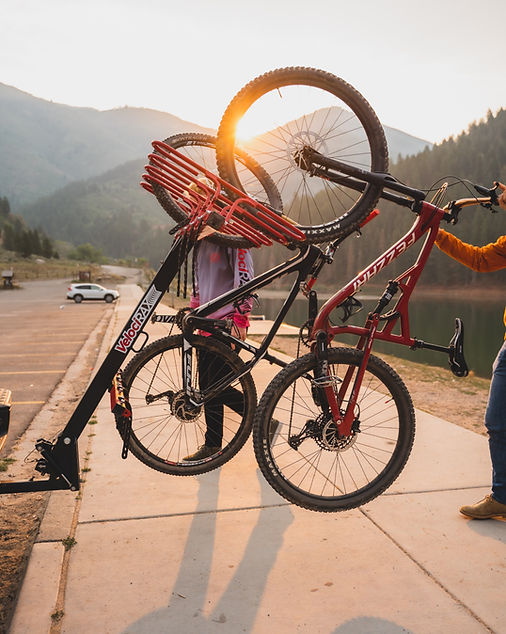
The only lifting you would have to perform is a slight lift to get the bike’s front tire out of the tire basket. When you return it to the rack, you only have to lift the bike a few inches off the ground as you position it in the associated tire hoop.
The Best Bike Racks for Hitch Option: Vertical
Paralysis by analysis is a real problem when selecting from a universe of bike racks for hitch options. By reading this, not only are you way ahead of the game, but you will have already realized that vertical racks aren’t just convenient, they're also versatile. They don't require a lot of space and hold more bikes than any other type of bike rack.
If you are looking to experience the best all-around bike rack, look no further. Check out how VelociRAX is built for your adventure, and see why nothing beats going vertical for bikes.

